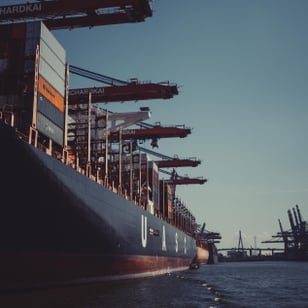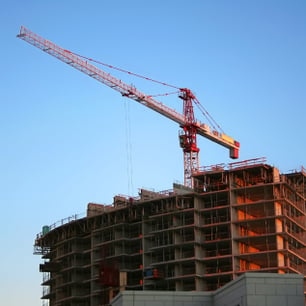.jpg?width=300&name=Design%20uten%20navn%20(9).jpg)
A quick guide to the EU Machinery Directive
TABLE OF CONTENTS
Introduction
The Machine Directive (2006/42/EC) is a European Union directive meant to ensure that all machinery and accompanying equipment, components, and accessories are risk assessed, manufactured, tested, and documented according to a common health and safety standard. Machinery Directive (2006/42/EC)
In our experience, many suppliers outside the EU also use the directive because it’s solid, comprehensive, and quality assured.
However, as with most directives and other regulations, it can be hard to keep track of all the requirements and documentation you need. We created this Machinery Directive Guide to help give you an overview of the main points of the directive and the documentation you need.
Hope it helps!
Definitions
Machinery
An assembly of linked parts or components of which at least one moves. The assembly must be fitted with a drive system other than directly applied human or animal effort. However, if the assembly is intended for lifting loads, it is included even if directly applied human effort is the only power source. Assemblies built to connect to sources of energy and motion or to be mounted on a vehicle or installed in a building or structure are also defined as machinery.
Interchangeable equipment
A device with moving parts assembled with machinery or a tractor by its operator to change its function or attribute a new function. If the device does not have moving parts, it is defined as a tool. Examples of interchangeable equipment are grabs, concrete mixers, and snow blowers.
Safety components
Components with a safety function that are independently put on the market, that are not necessary for the machinery to function or can be replaced by normal components for it to function, but that can pose a danger if it fails or malfunctions. Examples of safety components are guards and protective devices, valves, emergency stop devices, and restraint systems.
Lifting accessories
A component or equipment independently placed on the market meant to hold a load, which is not attached to the machinery but instead placed on the load or between the machinery and the load or intended to be an integral part of the load. Examples of lifting accessories are slings, eyebolts, forks, and containers.
Chains, ropes, and webbing
Chains, ropes, and webbing designed and constructed for lifting purposes as part of lifting machinery or accessories.
Removable mechanical transmission devices
A removable component for transmitting power between self-propelled machinery or a tractor and another machine by joining them at the first fixed bearing
Partly completed machinery
An assembly that is almost machinery but cannot alone perform a specific application and is intended to be incorporated into or assembled with other machinery or other partly completed machinery or equipment. Examples of partly completed machinery are engines and drill rigs on construction equipment.
Machinery not included
- Safety components intended to be used as spare parts to replace identical components and supplied by the manufacturer of the original machinery
- Specific equipment for use in fairgrounds or amusement parks
- Machinery specially designed for nuclear purposes that may result in an emission of radioactivity in the event of failure
- Weapons
- Agricultural and forestry tractors, motor vehicles and their trailers, and two- or three-wheel motor vehicles covered by other directives. Also, motor vehicles exclusively intended for competition and any means of transport by air, water, and rail networks are exempt. However, any machinery mounted on any of the mentioned vehicles or means of transport is covered by this directive
- Seagoing vessels and mobile offshore units, and machinery installed onboard
- Machinery specially designed for military or police
- Machinery specially designed for research and temporary use in laboratories
- Mine winding gear
- Machinery intended to move performers during artistic performances
- Electrical and electronic products covered by other directives, including domestic household appliances, audio and video equipment, information technology equipment, ordinary office machinery, low-voltage switchgear and control gear, and electric motors
- High-voltage switchgear and control gear, and transformers
The requirements
Ensure that it satisfies the relevant essential health and safety requirements
The essential health and safety requirements state that a risk assessment must be carried out to determine which health and safety requirements apply to the machinery.
The machinery must then be designed and constructed based on the risk assessment results to be operated, adjusted, and maintained without risk. The aim should be to eliminate any risk throughout the lifetime of the machinery, including transport, assembly, dismantling, disabling, and scrapping.
The manufacturer should also take protective measures for risks that cannot be eliminated, inform users of the residual risks and whether any training is required, and specify any need for protective equipment.
Ensure that a technical file is available
The technical file must demonstrate that the machinery complies with the directive’s requirements. It must include a construction file with a general description of the machinery, an overall drawing of the machinery and the control circuits, and descriptions and explanations necessary for understanding the operation of the machinery.
It must also include full detailed drawings, accompanied by any calculation notes, test results, certificates, etc., required to check that the machinery complies with the essential health and safety requirements.
The technical file must also document the risk assessment, including a list of the essential health and safety requirements that apply to the machinery, the description of the protective measures implemented, and, when appropriate, the indication of the residual risks associated with the machinery.
Mark the machinery
All machinery must be marked visibly, in a way that is easily understandable and not possible to remove, with:
- The business name and full address of the manufacturer
- Designation of the machinery
- The CE Marking (the size and proportions of which is specified in Annex III)
- Designation of series or type
- Serial number, if any
- The year of construction, i.e., the year in which the manufacturing process is completed
Supply instructions
All machinery must be accompanied by a user manual in the official language of the EU member state where the machinery is sold. The user manual must include a broad range of instructions and information, such as:
- The business name and full address of the manufacturer
- The designation of the machinery as marked on the machinery itself
- The EC declaration of conformity
- A general description of the machinery
- The drawings, diagrams, descriptions, and explanations necessary for the use, maintenance, and repair of the machinery
- A description of the intended use of the machinery
- Warnings on how the machinery must not be used
- Assembly, installation, and connection instructions
- Information about any risks and instructions on protective measures, including any personal protective equipment
- Instructions for safe transport, handling, and storage operations
- Safe procedure in the event of accident or breakdown
- Description of adjustment and maintenance operations
- Information on noise emissions
- Any possible emission of non-ionizing radiation which may cause harm
Provide certificates and specific information for lifting equipment
While several of the various types of machinery has specific requirements for markings and instructions, some lifting equipment also requires a certificate.
For chains, ropes, and webbings, each length must have a mark, plate, or irremovable ring with the name and address of the manufacturer and a reference to a certificate. The certificate must include the following information:
- The name and address of the manufacturer
- A description of the chain or rope which includes:
- its nominal size
- its construction
- the material from which it is made
- any special metallurgical treatment applied to the material
- The test method used
- The maximum load the chain or rope should be subjected to
Carry out procedures for assessing conformity
There are two options for assessing the conformity: Internal checks for selfcertification or using a third-party certification body, a so-called “notified body.” What process to use depends on the type of machinery and whether it has been manufactured in accordance with what’s called “harmonized standards ” (referenced in Article 7). The harmonized standards are nonbinding technical specifications published in the Official Journal of the European Union. harmonized standards
Some machinery is listed as higher-risk machinery in Annex IV, typically sawing and compression machinery, machinery for lifting people, and guards and other protective structures.
If the machinery is not listed as higher-risk machinery, the self-certification process described in Annex VIII is sufficient. This simply means that the manufacturer must take all measures necessary to ensure compliance with the technical file and the directive’s requirements.
The self-certification process can also be used if the machinery is listed as higher-risk machinery but is manufactured in accordance with the harmonized standards.
However, if the higher-risk machinery is not manufactured according to the harmonized standards, or those standards don’t exist for the machinery or cover all of the relevant essential health and safety requirements, a notified body must complete the conformity assessment. This procedure is described in Annex IX and X.
Draw up the EC declaration of conformity
When the machinery’s conformity is assessed, a declaration stating that conformity must be drawn and accompany the machinery. The declaration must include:
- Business name and full address of the manufacturer
- Name and address of the person authorized to compile the technical file
- Description and identification of the machinery, including generic denomination, function, model, type, serial number, and commercial name
- A sentence expressly declaring that the machinery fulfills the requirements of this directive or other relevant directives
- Where relevant, the name, address, and identification number of the notified body that carried out the full quality assurance system or the EC type-examination and the number of the EC type-examination certificate
- Where appropriate, a reference to the harmonized standards or other technical standards and specifications used
- The place and date of the declaration
- The identity and signature of the person empowered to draw up the declaration on behalf of the manufacturer
For partly completed machinery, these procedures differ slightly. See the directive’s Article 13 for more information.
Conclusion
These are the highlights of the Machinery Directive for equipment suppliers. Of course, also equipment owners must ensure that the products are compliant and have the required technical file, user manual, certification, and declaration of conformity.
Using a cloud-based software solution such as Onix makes this a lot easier, ensuring that all the required documentation is readily available for each product, from anywhere and at any time. With Onix, you can also mark the equipment with QR codes or RFID tags, making it even easier to access the necessary information and comply with the requirements of available information.
While the directive is highly recognized and solid, we always recommend that you are familiar with your local laws and regulations. And of course, this is only a summarization of the directive, meant to give you an overview of what to do and where to start to ensure compliance. The complete directive can be found here.
We hope this gave you a better understanding of the Machinery Directive. If you have any questions, please don’t hesitate to reach out!



